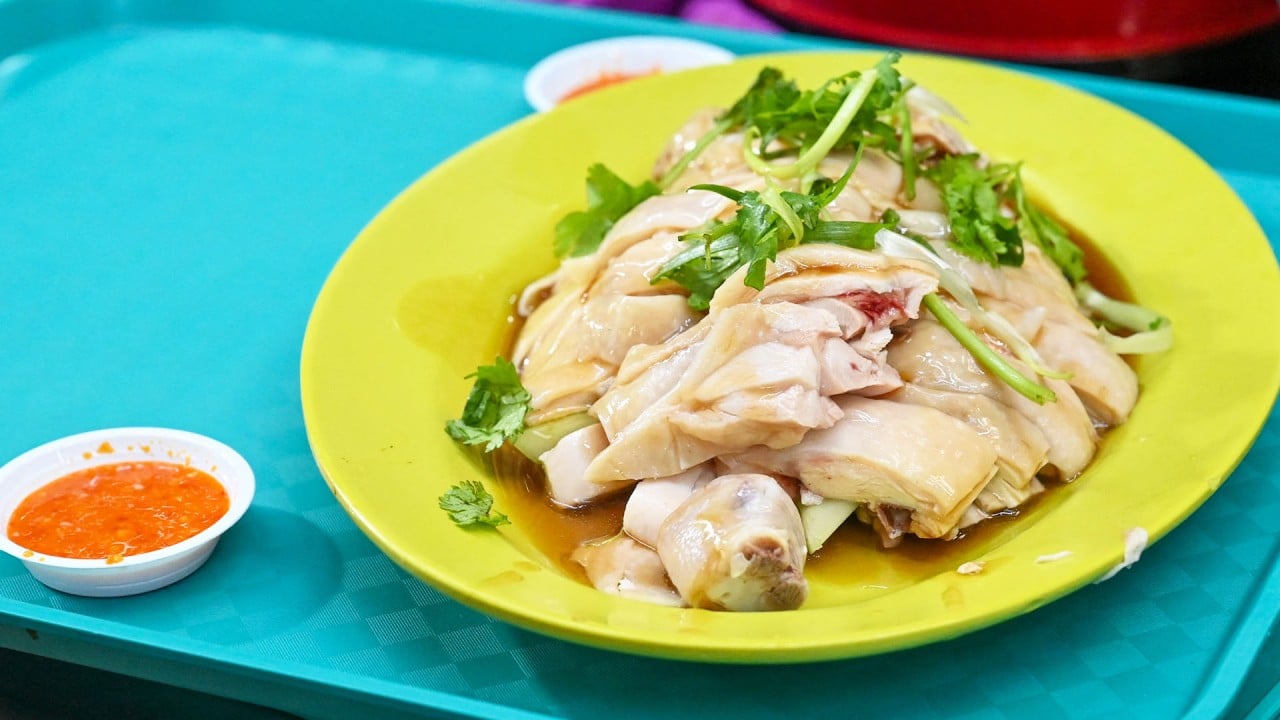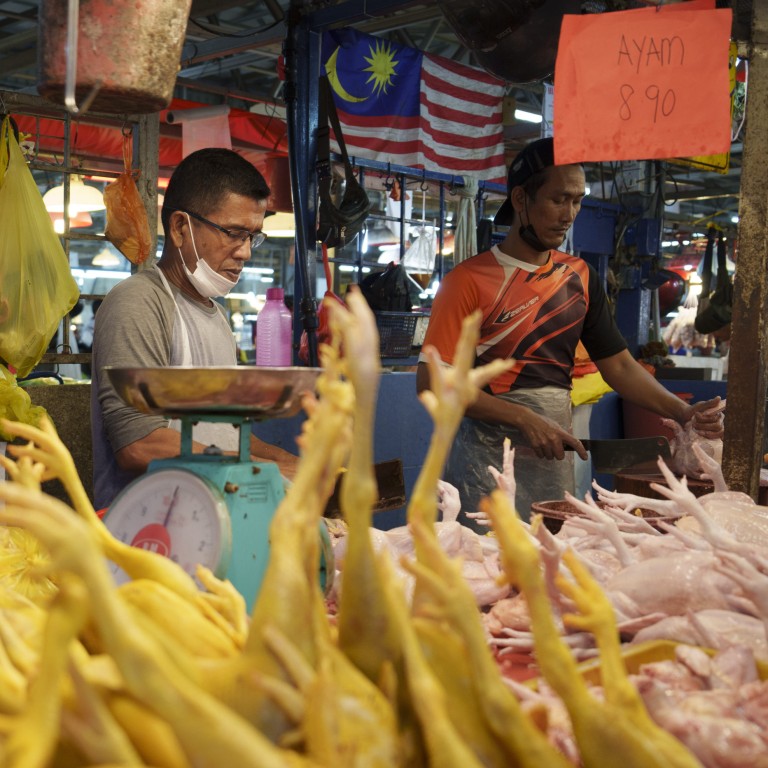
Explainer | Malaysia’s poultry export ban: when will it end, how have people reacted, will Singapore have to eat less chicken rice?
- Malaysia announced the ban on May 23 to stem local supply shortages, cutting off one-third of Singapore’s chicken supply indefinitely
- The city state has urged people to avoid hoarding frozen chicken, while Singapore’s most famous chicken rice store Tian Tian says it may have to suspend selling its main dish
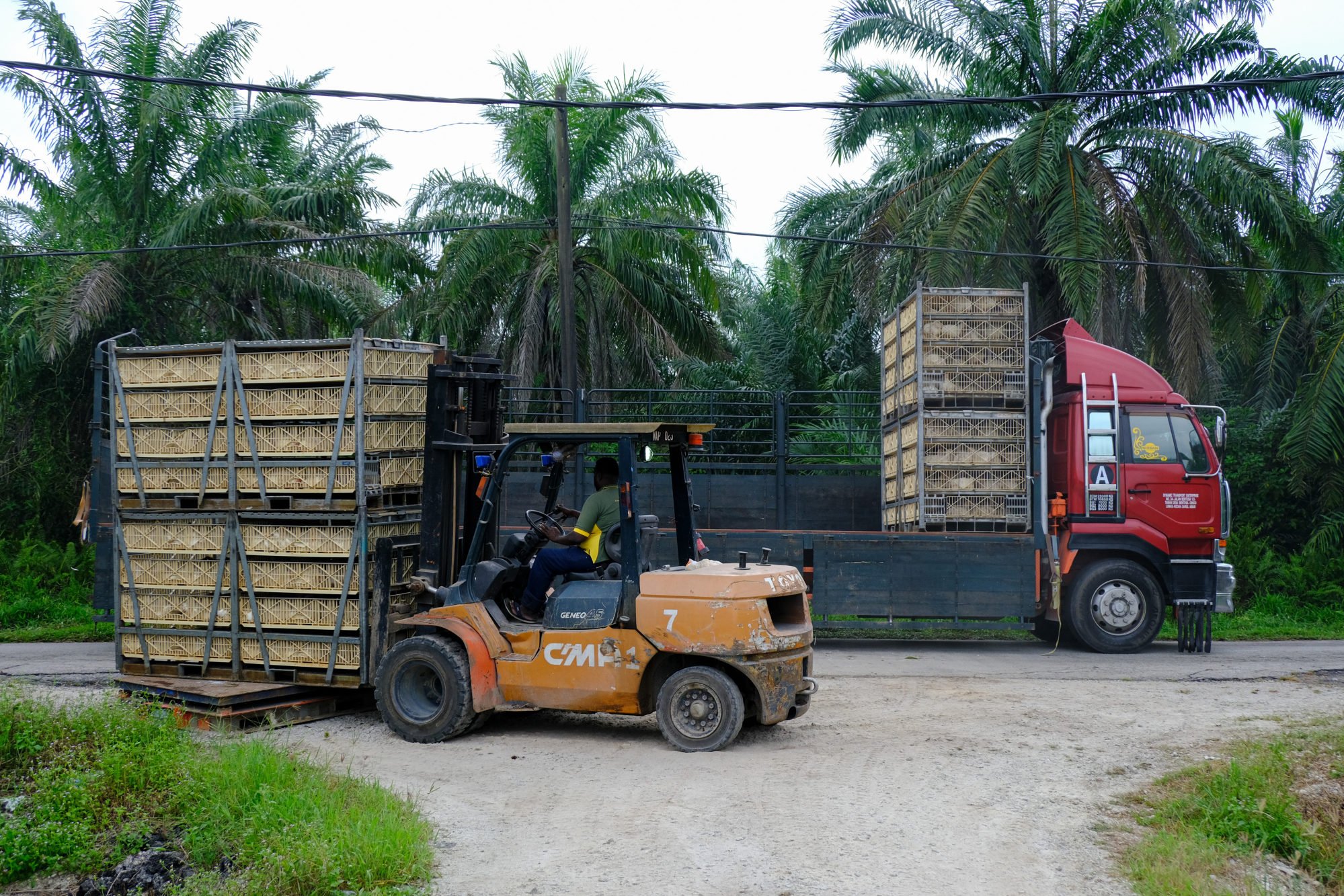
Why has Malaysia imposed a ban and how long will it last?
“I plead that the Malaysian Family supports this action undertaken by the government to protect the interests of the public who have been stifled by rising prices and costs of living, as well as supply shortages,” Ismail Sabri said, using the tagline he introduced to unite Malaysians after coming to power last August.
Malaysia chicken export ban ruffles feathers, but will it halt rising prices?
Yeah Kim Leng, economics professor at Sunway University, said the export ban was necessary to bridge domestic demand, but cautioned that it was a “blunt tool that is highly disruptive” to producers with long-term overseas supply contracts.
“The ban should therefore be quickly lifted as soon as the domestic supply-demand balance is restored with the cooperation of all industry players,” he said.
Besides the export ban, Ismail Sabri also announced the country would create reserve stocks of poultry, abolish import permits and increase the numbers of certified abattoirs overseas.
Why is Singapore so anxious about the ban?
Without fresh Malaysian birds, Singapore is now left with frozen supply from Brazil, which accounts for 48 per cent of the nation’s supply, followed by 8 per cent from the United States, and a coterie of other countries accounting for the remaining 10 per cent.
What Singapore is doing to boost its food security
The Singapore Food Agency said the restriction might result in temporary disruptions to the supply of chilled chicken and urged consumers to consider switching to frozen chicken or other meat products.
Singapore newspaper The Straits Times said chicken sellers predicted the cost of chilled chicken could rise by up to 30 per cent, which would send chicken dish prices soaring.
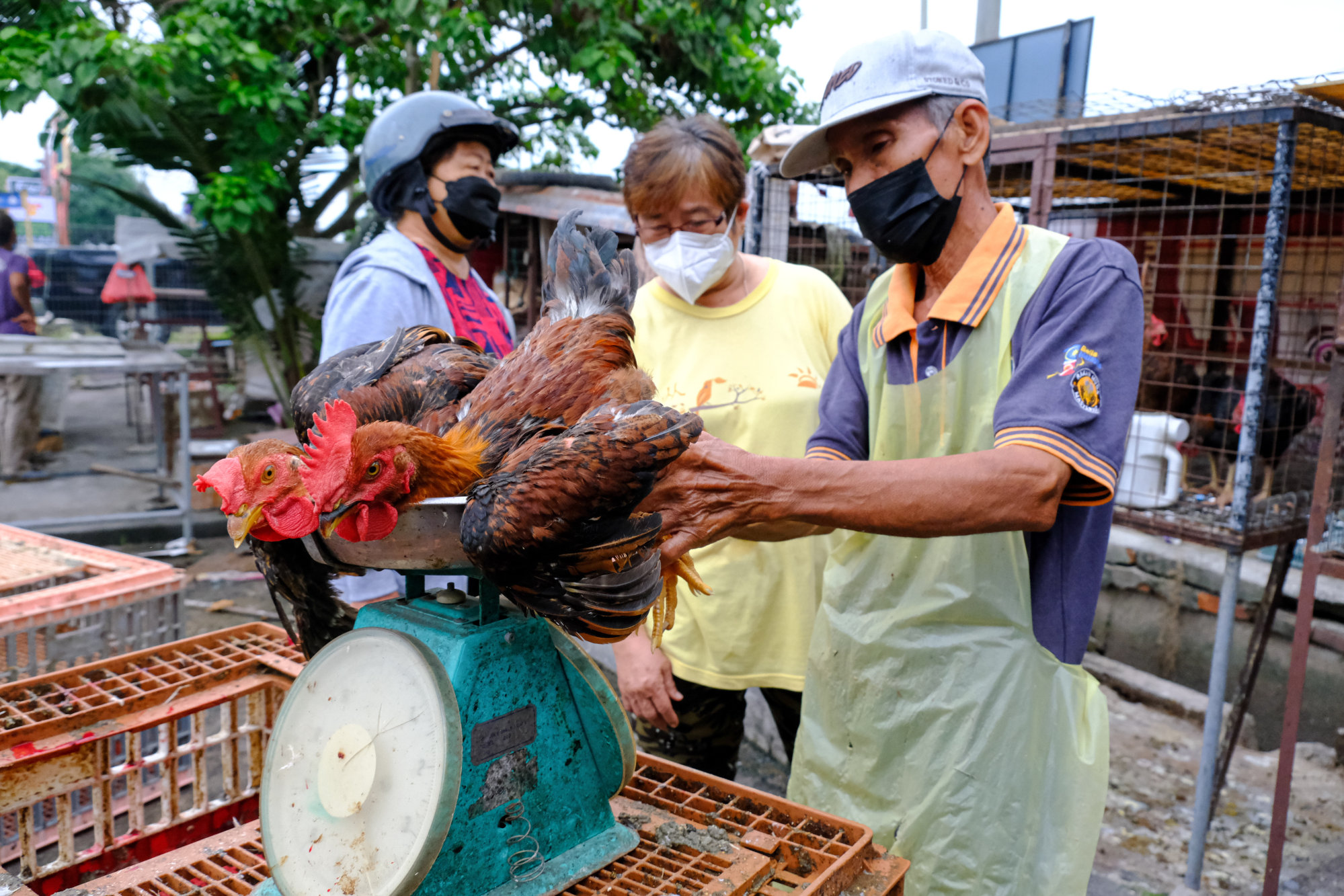
How have Singaporeans and Malaysians reacted to the ban?
Some Singaporeans have found humour in the saga, and taken to popular e-commerce app Carousell to post lighthearted advertisements for the “last chicken rice in Singapore that is not frozen”.
“This is the last unfrozen pack of chicken rice in Singapore,” wrote one ‘seller’, listing the pack as containing 5,000 grains of rice and nine slices of chicken.
Malaysians also joked about the situation on social media on the day the ban took effect, particularly over a video news report by Singapore’s Channel NewsAsia showing lorries carrying “the last batches of live broiler chickens from Malaysia” entering the city state’s customs checkpoint ahead of the midnight deadline.
“These are VIC: Very Important Chickens,” quipped Twitter user Izzat Syazwan.
As Asian food export bans bite, who will be hardest hit?
However, the sight of lorries laden with chicken driving out of the country also struck a raw nerve with some Malaysians, who questioned whether the shortage was real or was an attempt by producers at profiteering.
“Throngs of lorries carrying live chicken into Singapore. In Malaysia some gatherings had to swap out chicken for fish,” said Izuan Kasim, vice youth chief of Anwar Ibrahim’s Keadilan party.
But medium-scale Malaysian chicken producer Yani Hardinata Hairuddin from Safina Foods rubbished allegations of a conspiracy.
“Before shortages, we could slaughter up to 9,000 (birds) a day. Now it is less than 3,000 a week,” Yani told This Week in Asia.
Focusing on chickens produced according to the Islamic halal method, Yani said his plant was working together with other halal slaughterhouses to spread the cost.
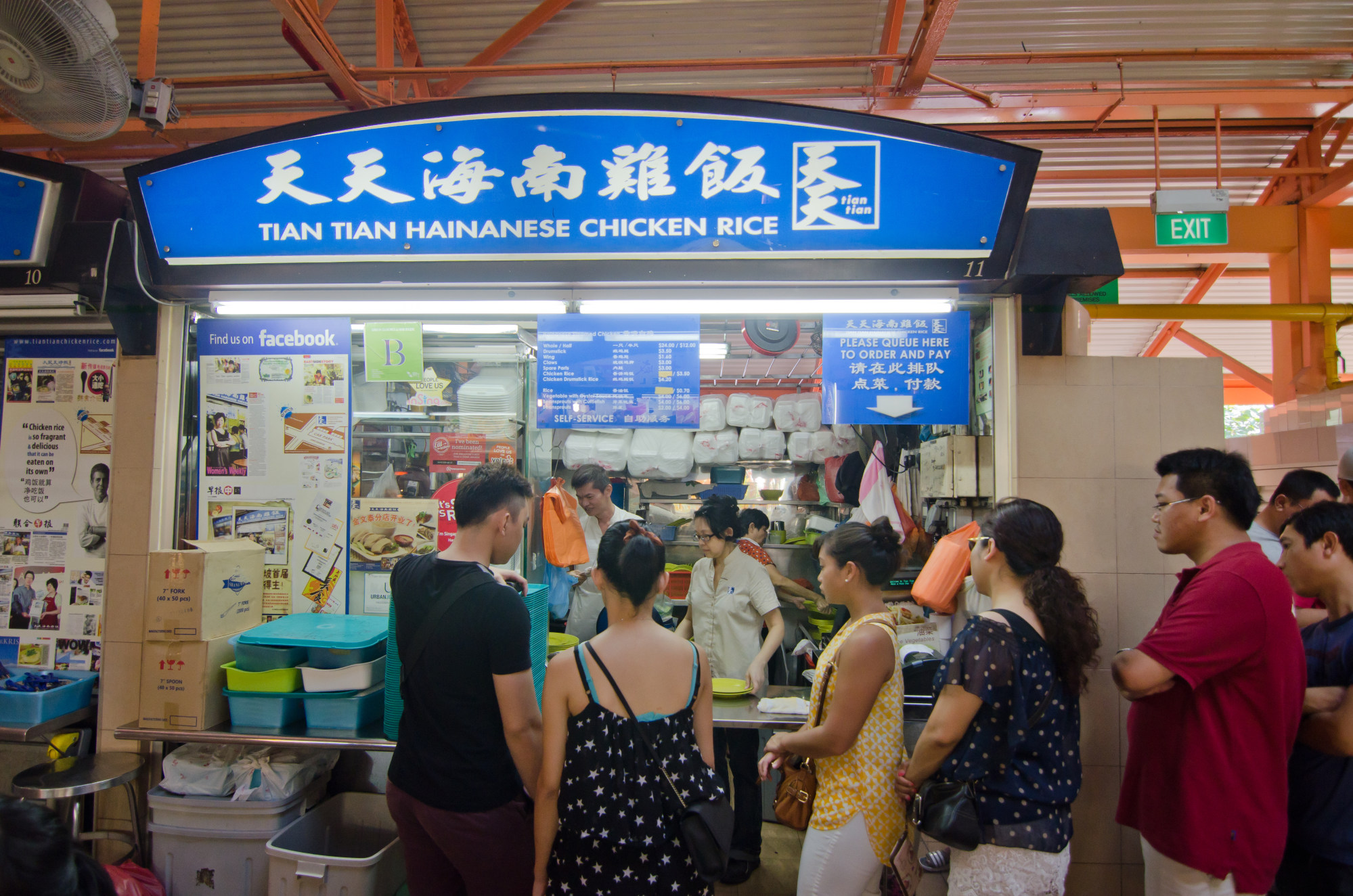
Will Singapore have to eat less chicken rice?
There are no indications yet when the Malaysian government will lift the ban. At present, prices remain high and The Star newspaper on Wednesday reported that poultry was being sold at 17 ringgit per kilogram at some local grocers, compared to the government’s fixed ceiling price of 8.90 ringgit (US$2.03) effective from February 5 to June 5.
In a speech on Wednesday, Ismail Sabri said the average price per kg would have reached 12 ringgit per kg had the government not intervened.
In Singapore, the founder of Tian Tian Hainanese Chicken Rice – one of the country’s best-known chicken rice eateries – told The Straits Times she was considering suspending the sale of chicken dishes if she was unable to get fresh supplies.
If he was unable to source alternative suppliers “we will bring back dishes like fried tofu, fried pork chop and prawn salad, but we will not use frozen chicken”, Foo Kui Lian told the newspaper.
Singapore authorities have urged the city state’s residents not to hoard or over-purchase frozen chicken.
The country’s biggest supermarket chain said it had a four-month stockpile of frozen chicken and another two months of supply coming in “very soon”.


